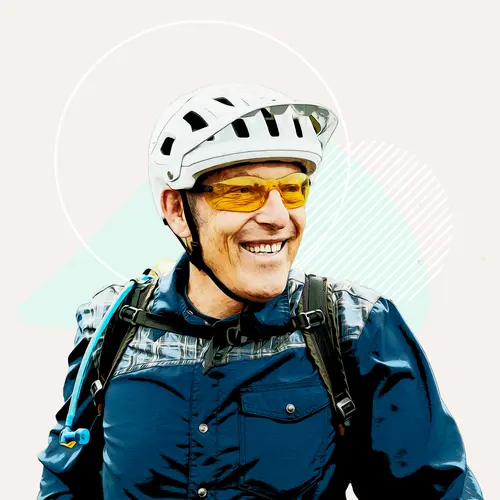Exercise can’t erase the years, but it can certainly help stave off the effects of aging. In fact, being physically fit is one of the best things you can do for your physical and mental health.
“Physical fitness helps reduce the risk of chronic disease and lower blood pressure and can reduce symptoms of anxiety and depression among some individuals,” says Scott Cheatham, PhD, DPT, professor of kinesiology at California State University Dominguez Hills.
While fitness won’t change how many candles are on your birthday cake, it could make you functionally years younger. “If you’re fit, you can endeavor to have the health of somebody 10 to 15 years younger,” says Michele Olson, PhD, senior clinical professor of sport science at Huntingdon College in Montgomery, AL.
But what exactly does “fit” mean? Turns out, it’s a broad term with several meanings -- and it doesn’t require looking like an Olympian.
In general, “it means being able to have the muscle strength, endurance, power, joint mobility, and overall flexibility to perform tasks or physical activities without undue fatigue or extreme effort,” Cheatham says.
So how do you get there? And what benchmarks can you use to determine if you’re fit? Experts answer these questions below.
What It Takes to Get Fit
It’s more doable than you may think.
The U.S. government’s latest Physical Activity Guidelines for Americans spells it all out.
“These guidelines provide a general exercise template for most individuals, and everyone should strive to meet or exceed their recommendations,” Cheatham says.
According to the guidelines, adults should do:
- At least 150 minutes to 300 minutes of moderate-intensity exercise (like brisk walking or raking your yard) or 75 minutes to 150 minutes of vigorous-intensity exercise (such as running or taking a hard fitness class) every week.
- Muscle-strengthening activities for all major muscle groups two or more days a week.
- Sit less and move more throughout the day.
Doing this will lower your risk of many health problems -- and push back against what the years will do if you take no action.
“With normal aging, your muscle mass and bone density decrease, and if you’re not putting a load on the heart and lungs beyond the activities of daily living, your cardiorespiratory fitness will suffer,” says Walt Thompson, PhD, past president of the American College of Sports Medicine.
You actually lose about 3% to 5% of muscle per decade after turning 30, Cheatham says. Flexibility and mobility also decline with age. And although you reach peak bone mass between the ages of 17 and 30 years, you begin to lose it rapidly after the age of 50.
That’s why being older doesn’t give you a pass on the physical activity guidelines. In fact, the guidelines recommend that people age 65 and older do balance training, too.
Still, you might have medical conditions or physical limitations that prevent you from reaching these weekly exercise milestones, Cheatham says. If that’s the case, you should follow the guidelines’ recommendations to be as physically active as your abilities and conditions allow and know that you may need to modify activities as you age.
For instance, running may have been your go-to activity in your 20s and 30s. But if you’re feeling more aches and pains now that you’re older, you may want to switch to a more low-impact activity like brisk walking or cycling.
Also, it’s wise to gradually add cardio, strength training, and balance activities gradually if you don’t already do them. If you have a health condition that might affect what’s OK for you to do, ask your doctor first. You don’t need a gym or fancy workout clothes. Just move and make it as fun as possible, so you’ll stick with it.
Don’t Obsess Over Fitness Age Benchmarks
Following the official guidelines is one way to ensure that you’re staying fit, and even stave off the aches and pains that often come from daily living, Olson says.
You can take fitness tests given by a qualified personal trainer. You might also find at-home options, such as the sit up test, pushup test, sit-and-reach test, and the 1.5-mile run. There are online articles saying what the age-related norms are for these exercises for men and women. However, norms compare how other men and women do at these tasks -- they’re not a standard you have to meet.
There’s also something called your fitness age, which is a marker of your cardiorespiratory fitness. Although Cheatham says it may not necessarily be a valid measure of your overall fitness level, this online fitness age self-test, which comes from the Norwegian University of Science and Technology, can be fun to take. It simply involves answering a series of questions.
Yet all of these come with a warning. “Don’t get hung up on these so-called benchmarks, as they should be based on your individual needs, goals, and physical activities,” Cheatham says.
In the end, remember that any movement is better than no movement, and moving more should be your ultimate goal.
“You’re not going to decide one day just to be physically fit, especially because you still have all of the reasons you used in the past not to be active,” Thompson says. “Instead, think about the activities you like to do and aspire to do them every day.”


